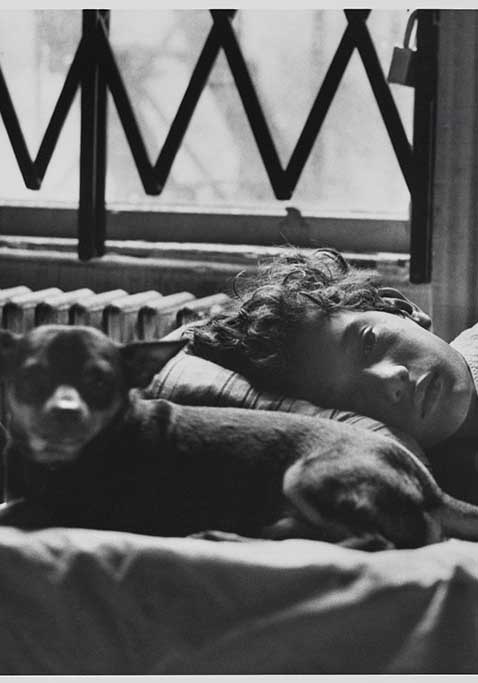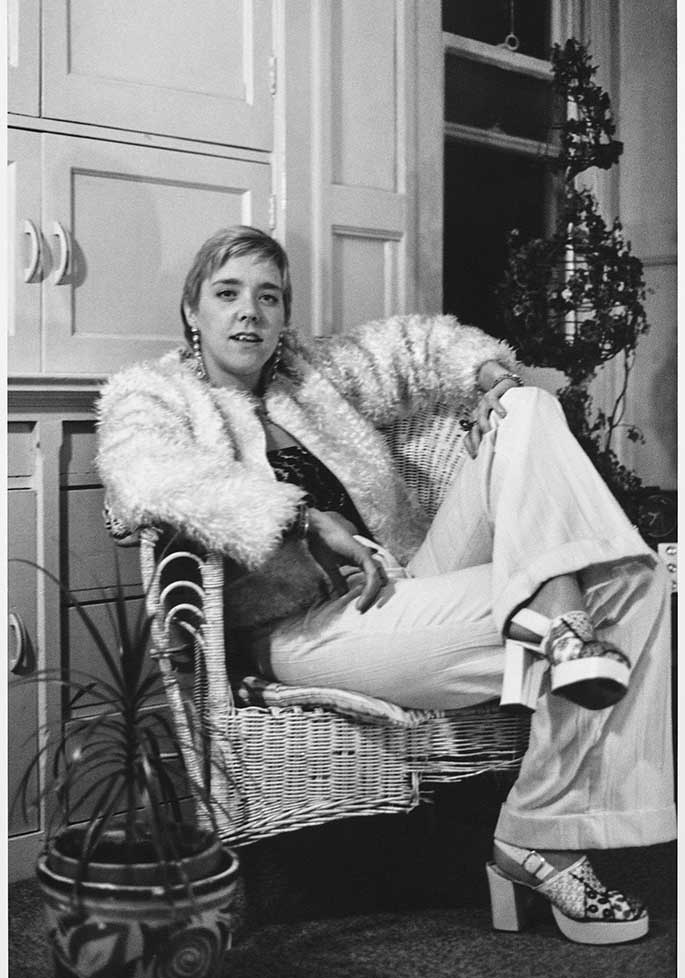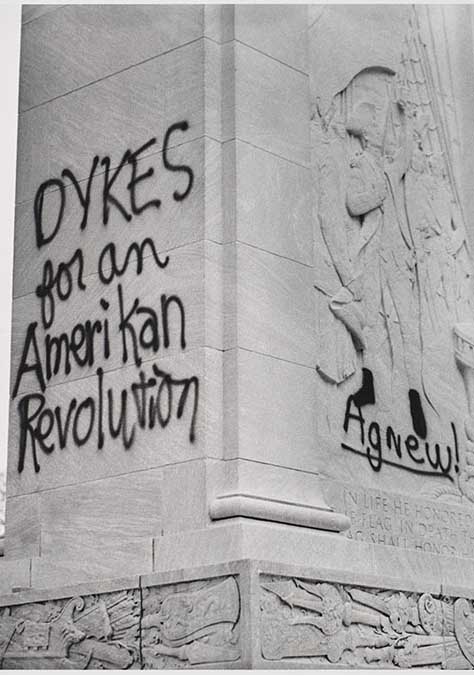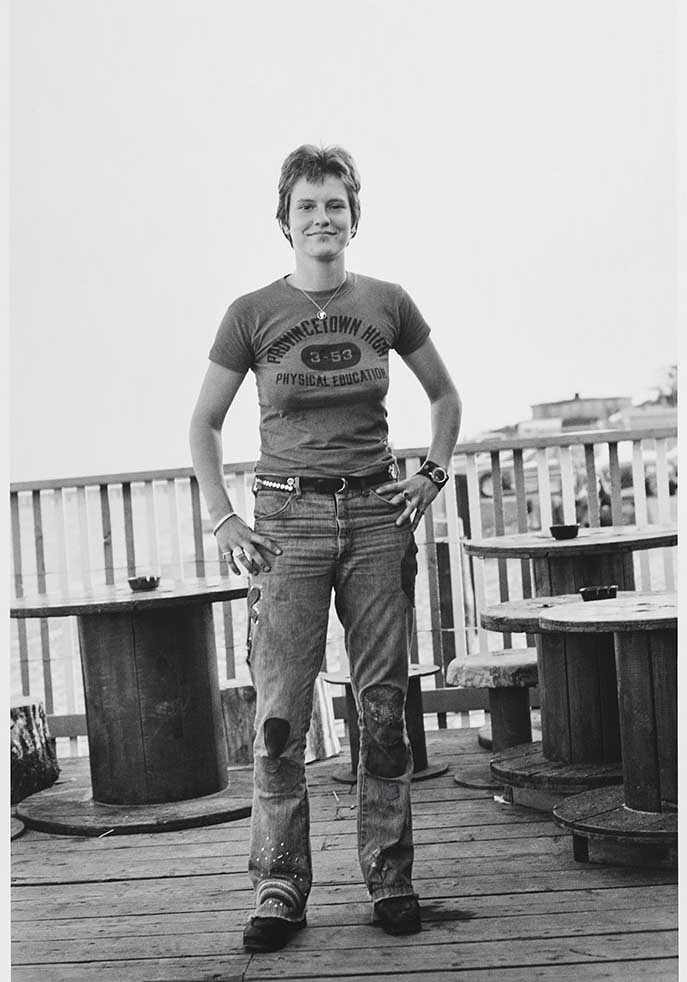
Ce qui fait une vie
Donna Gottschalk
06.04.2023 - 20.05.2023, vernissage 06.04.2023

en français plus bas
In 2019, we invited American photographer and lesbian feminist activist Donna Gottschalk to take part in the exhibition "de l’amitié" that we conceived to celebrate the place given to our shared imaginaries in the gallery and to extend a lover’s discourse in charge of accompanying forms created for and with others. With the support of writer and art theoretician Hélène Giannecchini, whose ongoing research focuses on queer archives and memory, our greatest desire is to tell what makes up the life of Donna and that of her close ones. These lives are presented in our gallery space through a large collection of photographs that the artist entrusted to us, starting with the bond that we have nurtured remotely over the past four years and the very strong tie that Hélène created by visiting, in a snowy Vermont, the woman who, in the 1970s, helped transform our understanding of identities, of self and of community--of its fragility and its strength — by photographing singular lives or what looks like a promise of unity.
CB: As we received a selection of five photographs by Donna Gottschalk for "de l'amitié" in 2019, we were aware that the images of this precious 1970s archive allowed us to embody rhizomatic and unconventional ties at the heart of our exhibition project. Donna’s artwork made it clear: no one can ignore what is given with warmth and understanding. Her photographs give free rein to a sentimental contemplation of alterity. This gentleness results from a relationship of trust — intimacy that the camera as a political tool takes care of. I knew that I was in front of people who wanted to live a peaceful life, and to see them so confident facing the camera was to perceive the best part of life, when the hours pass slowly and you can rely upon what you have achieved for yourself and for others: a common struggle, a collective nap, a tender gesture after a day of mobilisation. Donna has a gift for capturing equality and difference at the same time. And even though the power of domination, rejection, as well as disappearance are never far away, Donna’s warriors are powerful and unforgettable. These are people who have carried so many questions before us in the face of an unstable set of social values. There are so many desires that have remained intact, so many possible reversals.
HG: Donna Gottschalk was twenty years old at the time of the Stonewall riots in 1969, and it was precisely in those years that her photographic work gained momentum. Her practice is deeply connected to the emergence of the lesbian, trans and gay rights movements, of which she was an active member: she was an advocate for the Gay Liberation Front, she organised actions with radical lesbian groups such as the Lavender Menace, she met with activists, and welcomed in her New York studio, friends, acquaintances, and women who needed a place to stay after running away from their families and cities. Donna Gottschalk’s artwork is about friendship and solidarity — the bonds we invent to protect ourselves and to be free. One of the most striking things about her artwork is the way it unfolds over time. Donna has photographed the same people over a period of months, sometimes even years or decades. Her sister Myla was twelve years old in the first portrait, and a little over fifty in the last one, when Donna photographed her in the hospital a few months before she passed away. This photographic work thus reveals life paths and thereby shows what society does to bodies deemed abnormal.
There is, as Cécilia says, the gentleness of her gaze, her love for those she photographs, moments of pride, couples in love, powerful bodies, and tenderness. Yet, her images also reveal the violence of these lives, the difficulty of being a butch in a man’s world, the loneliness of some women, drug addiction, and homophobic assaults. These shots are reminiscent of Leslie Feinberg’s novel Stone Butch Blues — the same strength and harshness can be found there. These portraits also resonate with Dorothy Allison’s thoughts — they invite us to think jointly about issues of class, sexuality, and gender.
In Skin: Talking About Sex, Class And Literature, Dorothy Allison writes “To resist destruction, self-hatred, or lifelong hopelessness, we have to throw off the condition of being despised, the fear of becoming the they that is talked about so dismissively, to refuse lying myths and easy moralities, to see ourselves as human, flawed, and extraordinary. All of us are extraordinary.”
Donna Gottschalk’s images are one of those “cures for destruction”. She has documented lives with the desire to show their beauty and to save them from oblivion so that their names keep being uttered: Donna, Myla, Marlene, Chris, Joan, Vincent, Mary, Sue. All of them are extraordinary.
IA: You are right Hélène, Donna’s photography is a tribute to the lives of those who should be part of collective history. This is how the beautiful exhibition at the Leslie-Lohman Museum of Art (29.08.2018-17.03.2019), where I first discovered her photographs, was conceived. While they bear witness to their time, they are also telling of the ongoing marginalisation, to the present day, of lives refusing to adapt to individualism, straightness, the race for progress, gentrification, the normalisation of bodies and the desire to possess that annihilates all other forms of desire.
The collective experiences that the photographs reflect are probably what moves me the most as a feminist: photographs depicting such sweet post-demonstration moments, portraits of chosen families, of friendship bonds providing real safety nets in the face of the fragility of existence. As with Leslie Feinberg whom you mention, the radicality related to her class consciousness, the very materiality of her existence, have left Donna Gottschalk out of the official routes: it is time to repair the neglect that her work has experienced for so long and to give her the place she deserves in what the history of photography has identified as the great American humanist tradition.
translation: Callisto McNulty
Donna Gottschalk is an American photographer and a lesbian activist born in 1949. She grew up in New York City, in the Lower East Side. She joined the Cooper Union for the Advancement of Science and Art in 1969. The same year she joined the Gay Liberation Front, becoming an active member of the movement. In 1970, she and other activists organised the Lavender Menace action during the National Organisation for Women congress, to protest against the exclusion of lesbians from the women’s liberation movement. In 1971, she moved to San Francisco with her sisters Myla and Mary where she worked as a taxi driver. She then joined a photographic printing company before moving to Connecticut where she established her own lab with a partner. In the late 1990s, she became a nursing auxiliary and moved to Vermont. In 2018, the Leslie-Lohman Museum of Art in New York organised the first retrospective exhibition dedicated to her work. Throughout her life, Donna Gottschalk kept photographing her loved ones, her siblings, butch, fem, trans, gay activists, comrades and friends.
Hélène Giannecchini is a writer and an art theoretician. She holds a PhD in literature, and specialises in the relationship between text and image. She teaches art theory and creative writing in art schools. She published Une Image peut-être vraie in 2014 and Voir de ses propres yeux in 2020. Since 2021, she has been conducting research on queer archives and memory, including in the context of a residency at Centre national de la danse in Pantin (France). From 2021 to 2022, she was awarded a residency at Villa Albertine, with dancer and choreographer François Chaignaud and composer Sasha J. Blondeau, to write the booklet accompanying Cortège that will be performed at Philharmonie de Paris in June 2023.
Warmest thanks to: Donna Gottschalk, Hélène Giannecchini, Chloé Poulain, Laure Leprince, Lig (Lesbiennes d'Intérêt Général), Sasha J. Blondeau, Felixe Kazi-Tani, Josselin Vidalenc, Romain Grateau.
Welcome Clotilde Beautru <3
---
En 2019, nous invitions la photographe américaine et militante féministe lesbienne Donna Gottschalk à rejoindre les artistes associé·e·s à l'exposition "de l'amitié" afin de célébrer, au sein de Marcelle Alix, la place donnée à nos imaginaires communs et prolonger un discours amoureux chargé d'accompagner des formes créées pour et avec les autres. Avec le soutien de l'écrivaine et théoricienne Hélène Giannecchini, dont la recherche en cours porte sur les archives et les mémoires queer, notre plus grand désir est de raconter ce qui fait la vie de Donna et celle de ses proches, présent·e·s dans nos espaces à travers un grand ensemble de photographies que l'artiste nous a confiées, en partant de ce lien cultivé à distance depuis quatre ans et de celui très fort qu'Hélène a fait naître en visitant dans un Vermont enneigé celle qui a contribué dans les années 1970 à transformer notre compréhension des identités, du soi et de la communauté, de sa fragilité et de sa force, en photographiant des vies singulières ou ce qui ressemble à une promesse d’unité.
IA: tu as raison Hélène, le travail photographique de Donna est un monument à ces existences qui doivent faire partie de l’histoire commune. C'est ainsi qu’était conçue la belle exposition du Leslie-Lohman Museum (29.08.2018-17.03.2019) où j'ai vu les photographies pour la première fois. Si elles témoignent de leur époque, elles racontent la marginalisation en continue, jusqu'à aujourd'hui, des vies qui ne sont pas solubles dans l’individualisme, la straightness, la course au progrès, la gentrification, la normalisation des corps et le désir de possession qui annihile tout autre désir. Les expériences collectives dont les photographies témoignent sont probablement ce qui me touche le plus, en tant que féministe : photographies de moments post-manifestations si doux, portraits de familles choisies, figuration de liens d’amitié qui tendent de véritables filets de sécurité face à la fragilité de l’existence. Comme pour Leslie Feinberg que tu cites, la radicalité liée à sa conscience de classe, la matérialité même de son existence, ont laissé Donna Gottschalk en-dehors des circuits consacrés: il est temps de réparer l’ignorance dont sont travail a fait l’objet pendant si longtemps et de lui donner la place à laquelle elle a droit dans ce que l’histoire de la photographie a identifié comme la grande tradition humaniste états-unienne.
Donna Gottschalk est une photographe américaine et militante lesbienne née en 1949. Elle a grandi à New York, dans le Lower East Side. Elle intègre the Cooper Union for the Advancement of Science and Art en 1969. La même année elle rejoint le Gay Liberation Front et devient un membre actif du mouvement. En 1970 elle organise avec d’autres activistes l’action Lavender Menace durant le congrès de la National Organisation for Women, pour protester contre l’exclusion des lesbiennes du mouvement de libération féministe. En 1971 elle déménage à San Francisco avec ses sœurs Myla et Mary où elle exerce la profession de chauffeuse de taxi. Elle rejoint ensuite une entreprise de tirages photographiques avant de s’installer dans le Connecticut où elle monte, avec son associé, son propre laboratoire. À la fin des années 90 elle devient aide-soignante et s’installe dans le Vermont. En 2018 le Leslie Lohman Museum à New York lui consacre sa première rétrospective. Tout au long de sa vie Donna Gottschalk n’a eu de cesse de photographier ses proches, ses frères et sœurs, les personnes butchs, fem, trans, gay, activistes, camarades et ami·es qu’elle côtoie.
Hélène Giannecchini est écrivaine et théoricienne. Docteure en littérature, spécialiste des rapports entre texte et image, elle enseigne la théorie de l’art et la création littéraire en école d’art. Elle a publié aux éditions du Seuil Une Image peut-être vraie en 2014 et Voir de ses propres yeux en 2020. Depuis 2021 elle mène une recherche sur les archives et les mémoires queer, notamment dans le cadre d’une résidence au Centre national de la Danse de Pantin. De 2021 à 2022 elle est lauréate de la Villa Albertine avec le danseur et chorégraphe François Chaignaud et le compositeur Sasha J. Blondeau pour écrire le livret de la pièce Cortège jouée à la Philharmonie en juin 2023.
Remerciements : Donna Gottschalk, Hélène Giannecchini, Chloé Poulain, Laure Leprince, Lig (Lesbiennes d'Intérêt Général), Sasha J. Blondeau, Felixe Kazi-Tani, Josselin Vidalenc, Romain Grateau.
Bienvenue à Clotilde Beautru <3






























